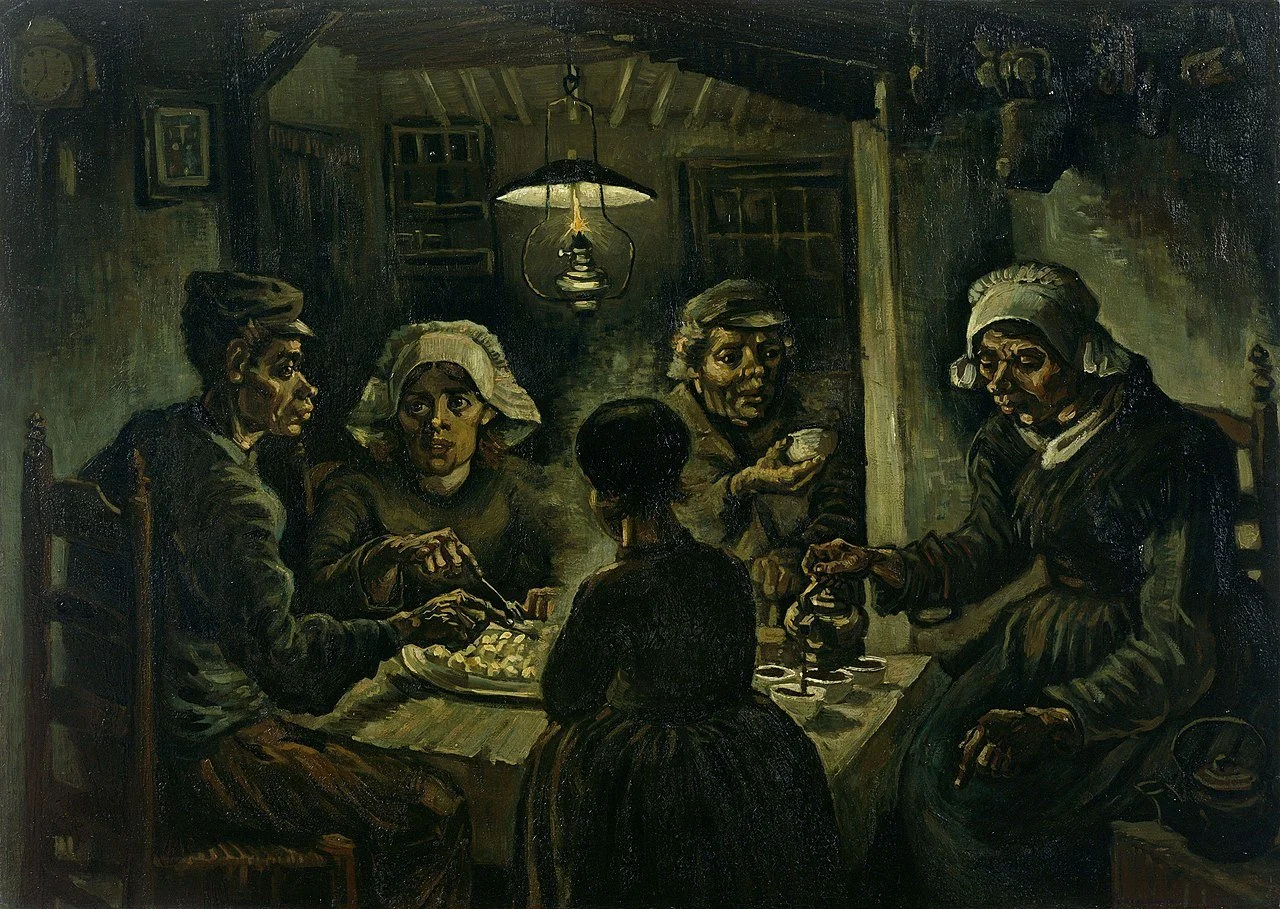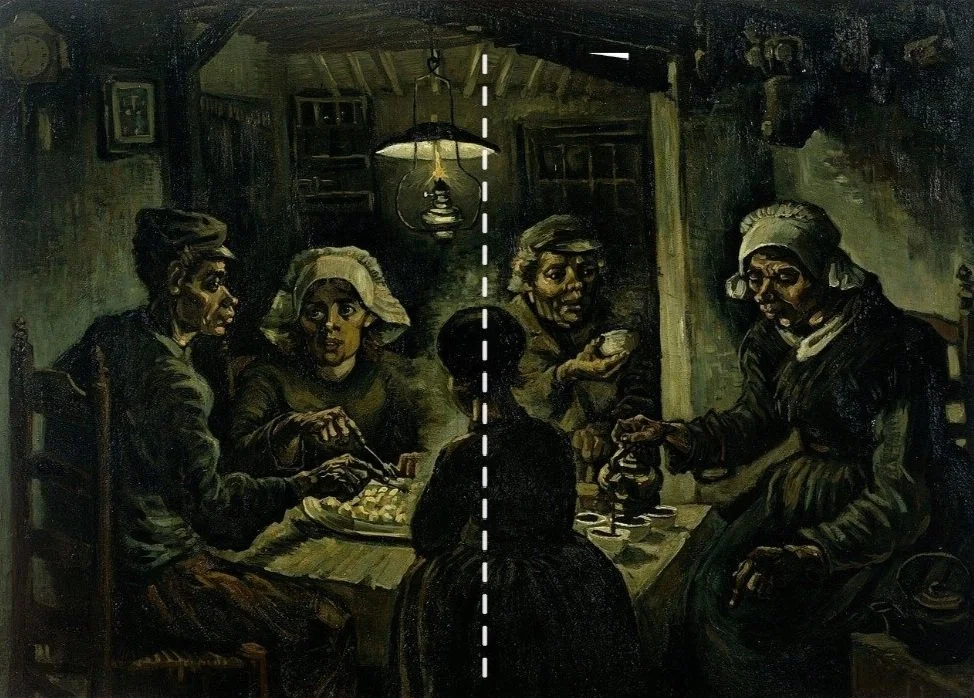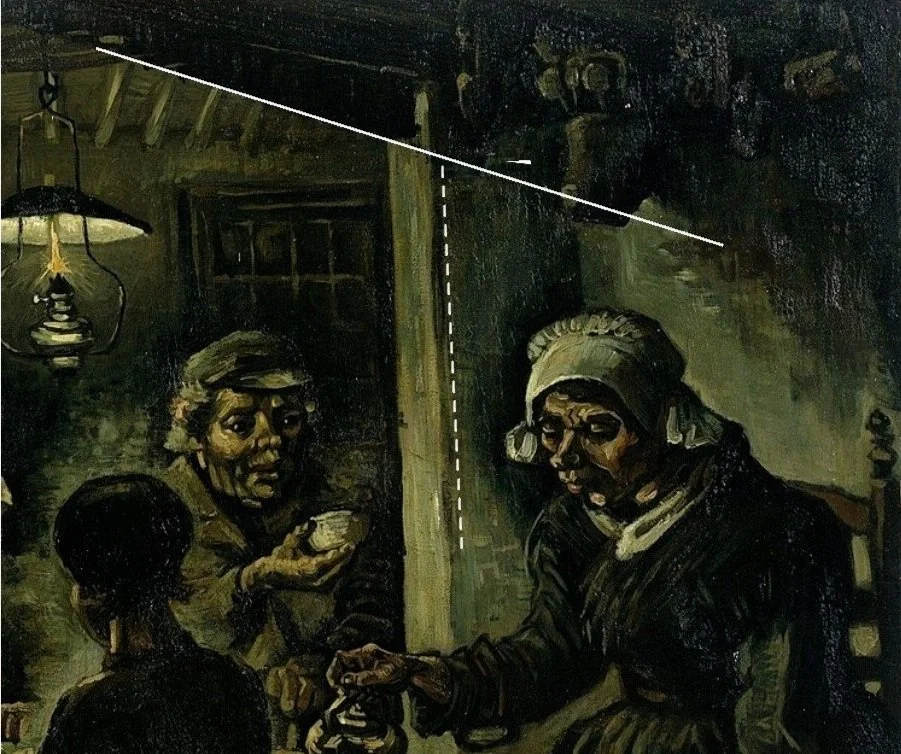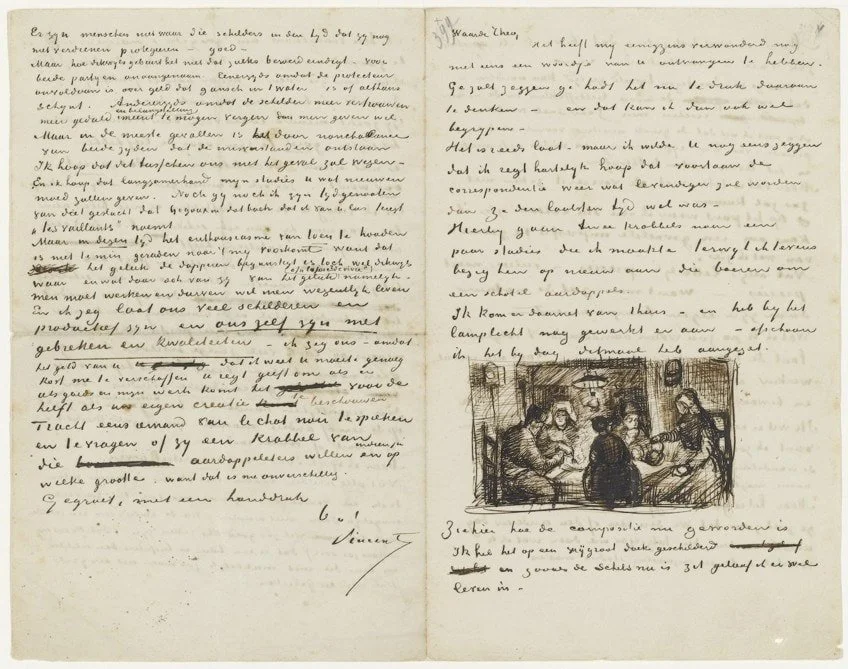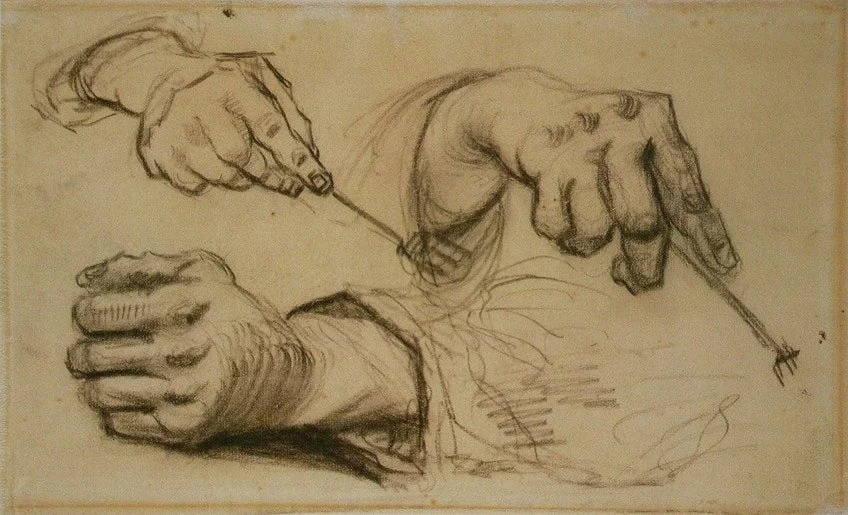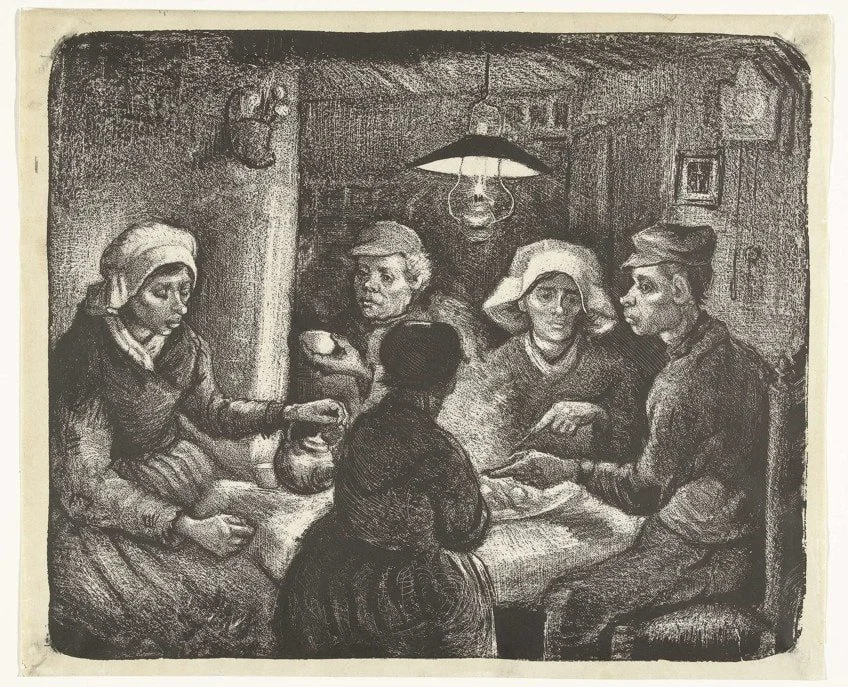Artist: Vincent Van Gogh
Van Gogh saw the Potato Eaters as a showpiece, for which he deliberately chose a difficult composition to prove he was on his way to becoming a good figure painter.
They are in a dark room and the only light source comes from the oil lamp hanging from the beams of the ceiling. The lamp is situated almost in the centre of the painting and it illuminates the room.
The message of the painting was more important to Van Gogh than correct anatomy or technical perfection. He was very pleased with the result: yet his painting drew considerable criticism because its colours were so dark and the figures full of mistakes.
The subjects have coarse and protruding features, which are distinctive characteristics of peasants. Their figures are bony. Van Gogh was trying to portray the ordinary, poor and tough lives of the peasants.
Although the painting is dominated by dark and gloomy colors, the facial expressions of the peasants shine out brightly, revealing their mixed inner emotions. Their expressions are very serious and solemn, and they do not seem to be very happy.
The colors used are mainly dull colors such as brown and black, giving a depressing and melancholy feeling to the painting. The earthy tones resemble the coarse, sunburnt face of the peasants.
The composition of the painting is carefully arranged. The painting is almost symmetrical in the way the figures are positioned, as they are distributed geometrically.
The ceiling is low and close to the peasants, the room is also small and shabby, creating a sense of oppression.
Vincent wrote that he wanted people to
“get the idea that these folk, who are eating their potatoes by the light of their little lamp, have tilled the earth themselves with these hands they are putting in the dish, and so it speaks of MANUAL LABOUR and – that they have thus honestly earned their food”.
A letter from Vincent Van Gogh to his brother Theo Van Gogh, dated Thursday, 9 April 1885.
The letter includes a sketch of The Potato Eaters.
Studies of Hands by Vincent (two of them holding forks)
A Lithograph of The Potato Eaters by Vincent (1885)
What does this painting make you feel?
Do you think Vincent did justice to the subjects he was painting? Share your thoughts in the comments!

